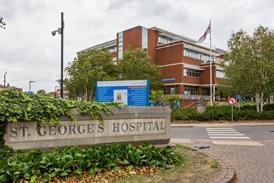Combining digital support for urgent care, primary care and mental health, Livi digital hubs offer a central bank of clinical capacity, bringing together everything we have to offer in a single package.
The recent NHS England board paper, Access to Primary Care, outlined the stark reality surrounding the current mismatch between demand and capacity within primary care. In doing so, it revealed what many working tirelessly in general practice have known for some time now. That pressure on primary care services has never been greater.
Sponsored by
Indeed, the number of full-time equivalent GPs continues to fall, and yet, conversely, at the same time, we have witnessed a record number of appointments this past year. In the 12 months ending July 2022, 345 million appointments were recorded as being delivered, compared to 310 million appointments recorded in the 12 months ending July 2019.
A barometer for the health system
With general practice the bedrock of the NHS, and the foundation or baseline on which the health system is built, the current situation can very much serve as a barometer for similar pressures occurring elsewhere in the system, unfortunately.
Indeed, urgent and emergency care and mental health services are also seeing record figures in demand. In urgent and emergency care, there were 2.18 million accident and emergency attendances and 900,000 ambulance calls last summer. In mental health, there are an estimated 1.4 million people accepted for or eligible for care who are yet to receive it.
New ways of working
With the NHS in the midst of the most challenging winters on record, current pressures are not sustainable. New ways of working are required to not only navigate the months ahead, but also ensure the future sustainability of the health system.
Recognition of this fact welcomingly arrived in the form of the recent Fuller Stocktake which takes a system-level view in its advocacy for the integration of primary care, and its future role with integrated care boards and integrated care systems. At the heart of this new vision will be flexible neighbourhood teams to foster greater collaboration and enable general practice to truly provide care at scale.
As an evolution of primary care networks, this model will bring together primary care providers, secondary and social care to improve the health of local communities, within a footprint. The model will build on much of the work accomplished so far by PCNs, which has seen greater collaboration as well as sharing of resources, administration, back-office support, and pathways.
A release valve
Now, just as the system is in the process of reorienting, so must digital providers. To tackle multiple pressure points across the system, an immediate release valve is needed.
That’s why here at Livi, we’ve designed a new digital hub offering to provide targeted integrated assistance. Combining digital support for urgent care, primary care, and mental health, it offers a central bank of clinical capacity, bringing together everything we have to offer in a single package.
By acting early to mobilise hubs in high-pressure areas, our NHS partners will be equipped to deploy additional clinical supply at speed across different specialities and in different models when pressures arise. For example, providing support to both practices with resilience challenges as well as round the clock urgent care support direct from NHS 111.
The vision is to “virtually locate” digital clinical teams around aforementioned “pressure points”, and build resilience where and when it is needed most within the UK. The service will be staffed by a multidisciplinary team of GPs, ACPs and mental health professionals, with capability to provide support for urgent same-day appointments across large populations.
Digital hubs can be mobilised now at speed, to support winter pressures and beyond.
If you would like to know more about how Livi can support your organisation, please contact partnerships-uk@livi.co.uk


























